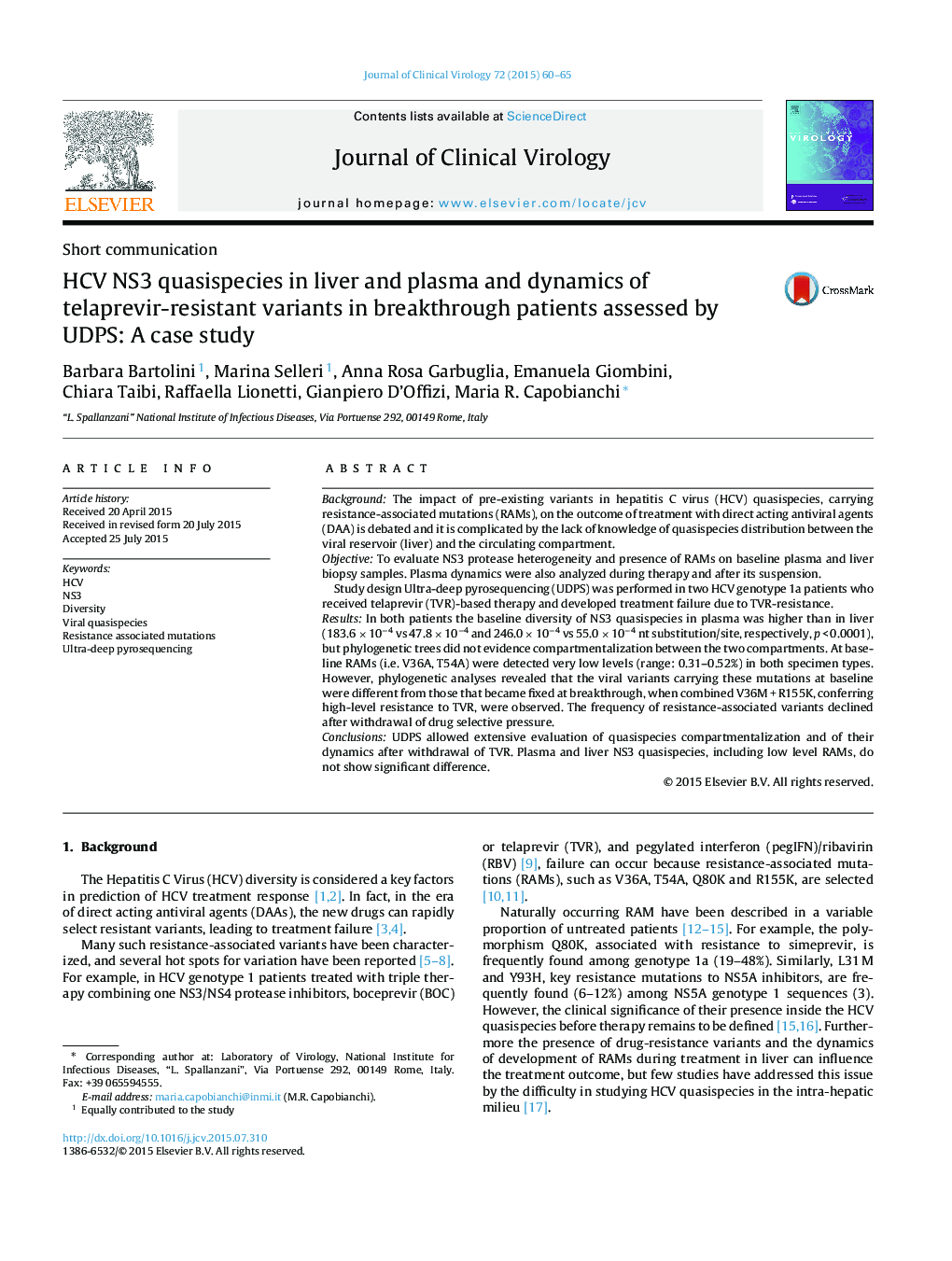| کد مقاله | کد نشریه | سال انتشار | مقاله انگلیسی | نسخه تمام متن |
|---|---|---|---|---|
| 3368782 | 1592354 | 2015 | 6 صفحه PDF | دانلود رایگان |

• HCV NS3 quasispecies in two TVR-failed patients has been assessed by UDPS.
• Baseline diversity in plasma was higher than in liver.
• The baseline frequency of RAMs was very low in both compartments.
• Phylogenetic trees did not evidence compartmentalization between plasma and liver.
• Baseline RAM-harboring variants seem different from those fixed at breakthrough.
BackgroundThe impact of pre-existing variants in hepatitis C virus (HCV) quasispecies, carrying resistance-associated mutations (RAMs), on the outcome of treatment with direct acting antiviral agents (DAA) is debated and it is complicated by the lack of knowledge of quasispecies distribution between the viral reservoir (liver) and the circulating compartment.ObjectiveTo evaluate NS3 protease heterogeneity and presence of RAMs on baseline plasma and liver biopsy samples. Plasma dynamics were also analyzed during therapy and after its suspension.Study design Ultra-deep pyrosequencing (UDPS) was performed in two HCV genotype 1a patients who received telaprevir (TVR)-based therapy and developed treatment failure due to TVR-resistance.ResultsIn both patients the baseline diversity of NS3 quasispecies in plasma was higher than in liver (183.6 × 10−4 vs 47.8 × 10−4 and 246.0 × 10−4 vs 55.0 × 10−4 nt substitution/site, respectively, p < 0.0001), but phylogenetic trees did not evidence compartmentalization between the two compartments. At baseline RAMs (i.e. V36A, T54A) were detected very low levels (range: 0.31–0.52%) in both specimen types. However, phylogenetic analyses revealed that the viral variants carrying these mutations at baseline were different from those that became fixed at breakthrough, when combined V36M + R155K, conferring high-level resistance to TVR, were observed. The frequency of resistance-associated variants declined after withdrawal of drug selective pressure.ConclusionsUDPS allowed extensive evaluation of quasispecies compartmentalization and of their dynamics after withdrawal of TVR. Plasma and liver NS3 quasispecies, including low level RAMs, do not show significant difference.
Journal: Journal of Clinical Virology - Volume 72, November 2015, Pages 60–65